Disclosure: This article contains affiliate links. We may earn a commission from purchases at no extra cost to you, which helps our travel content.
There's something magnetic about Beijing - this sprawling metropolis where ancient traditions crash into hyper-modernity at every corner. But after a week of navigating crowded hutongs and breathing in the city's particular urban perfume, I found myself craving the kind of vertical freedom that only mountains can provide. The kind that reminds me of those early climbing days back in college when I first realized that pushing physical limits could also be a spiritual practice.
Beijing might seem like an odd base for an adventure junkie like me, but trust me - this city sits at the doorstep of some seriously epic day trips that'll satisfy both your need for adrenaline and cultural immersion. From scaling restored and wild sections of the Great Wall to hiking sacred mountains where martial arts monks once trained, these five adventures have become my go-to escapes whenever the city's concrete jungle starts closing in. Grab your daypack, lace up those hiking boots, and let's break free from the tourist crowds to discover Beijing's wild side.
Jiankou to Mutianyu: The Great Wall's Wild-to-Mild Adventure
The moment my boots hit the crumbling stones of Jiankou's unrestored section, I knew this wasn't the Great Wall from postcards. This was my kind of Wall - raw, untamed, and demanding respect with every step.
This 9.3 km trek from the wild Jiankou section to the restored Mutianyu segment might be the perfect Beijing adventure. You start in near solitude on ancient crumbling stones that have weathered centuries without restoration, navigating steep ascents that would make my climbing buddies back in the Dolomites nod with approval. The route follows the mountain ridge with jaw-dropping views of the wall snaking across mountains in both directions.
What makes this hike special is the transition. You begin in wilderness and gradually make your way to the restored section at Mutianyu, watching the wall transform beneath your feet. It's like walking through centuries of history, from abandonment to restoration. The contrast is striking - from precarious footing and overgrown sections to perfectly maintained stones crowded with tourists.
The physical challenge reminds me of training for the Rome Marathon, but with better views and a deeper historical connection. There's something profoundly moving about placing your hands on stones that were laid over 500 years ago, feeling the same mountain winds that once buffeted Ming Dynasty guards.
My abuela would say there are spirits in ancient places like this. Standing alone on a watchtower at Jiankou as the morning mist burned away, I felt what she meant. Some places hold energy you can almost touch.
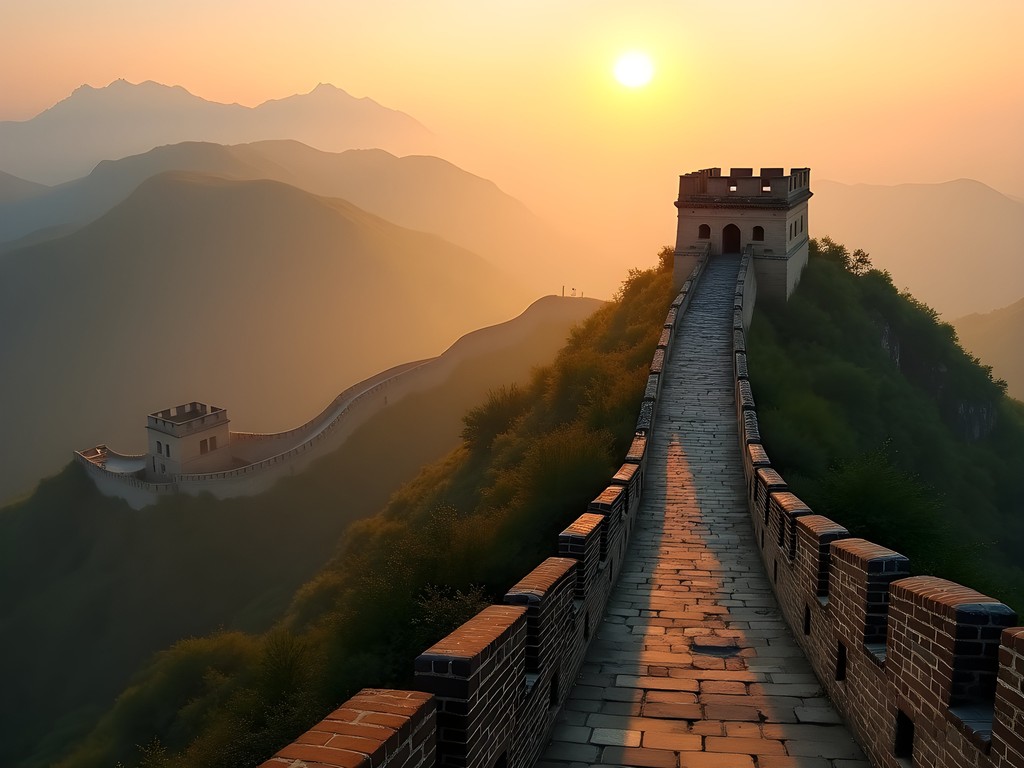
💡 Pro Tips
- Start early (around 7am) to avoid both crowds and afternoon heat
- Hire a local guide - the Jiankou trailhead is notoriously difficult to find
- Bring at least 2 liters of water - there are no refill stations until Mutianyu
Bouldering and Hiking at Baihe Canyon
Just 70 km northeast of Beijing lies a climber's playground that feels worlds away from the capital's chaos. Baihe Canyon (White River Canyon) in the Huairou District is where I go when my fingers start itching for some rock time.
The canyon cuts through the mountains with dramatic limestone and granite formations that create natural climbing routes ranging from beginner-friendly to seriously technical. What I love about Baihe is how it combines hiking with climbing opportunities - you can make your adventure as vertical as you want it to be.
The main trail follows the river upstream for about 10 km, crossing wooden bridges and passing by small waterfalls that provide perfect cool-down spots during summer months. But the real magic happens when you veer off onto the side paths that lead to hidden bouldering areas.
My favorite spot sits about 3 km into the canyon - a collection of house-sized boulders with routes that remind me of my first climbing gym back in Florida, except here, the backdrop is mist-shrouded mountains instead of concrete walls. I always pack my climbing shoes and enough chalk for a full day of problems. The rock quality isn't Fontainebleau, but there's something special about working out routes that few international climbers have touched.
Beyond the physical challenge, Baihe offers something I rarely find so close to a major city: genuine tranquility. On weekdays, you might encounter only a handful of local hikers and the occasional fisherman trying his luck in the clear waters. The canyon walls amplify the sounds of rushing water and birdsong, creating a natural meditation space that reminds me of those quiet moments in the Dolomites when the mountains seem to speak directly to your soul.
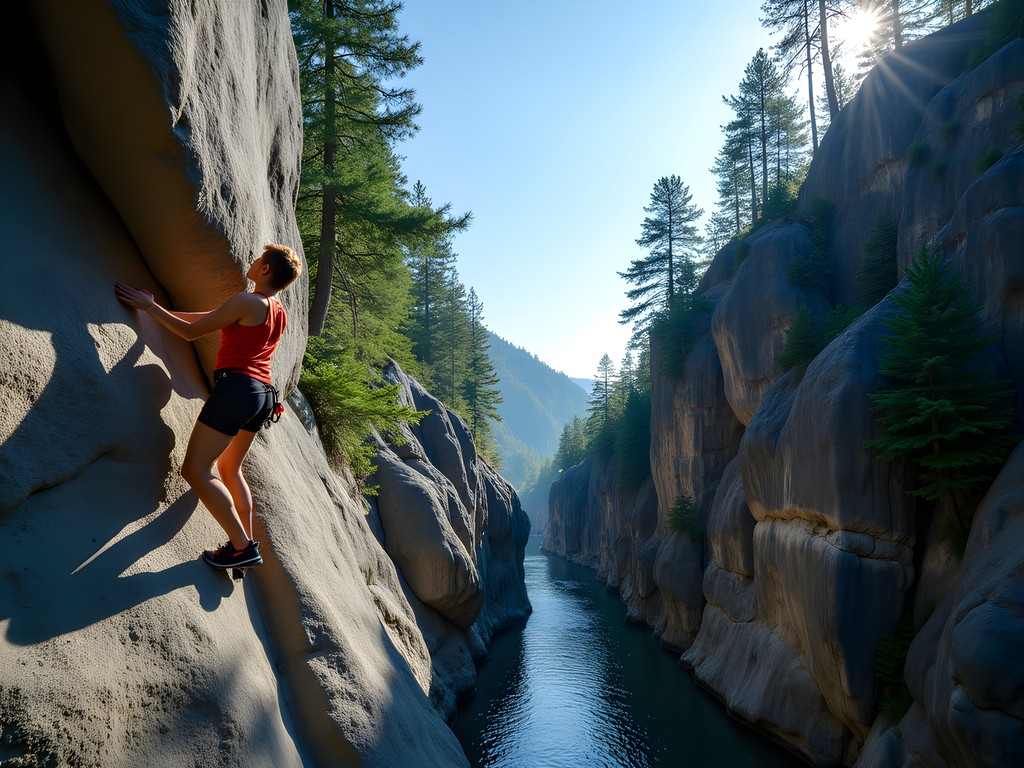
💡 Pro Tips
- Bring your own climbing gear - there are no rental shops nearby
- Download maps offline as cell service disappears deep in the canyon
- Visit on weekdays to avoid local weekend crowds
Spiritual Trek: Miaofengshan Mountain Pilgrimage
Some adventures feed the body; others feed the soul. The trek to Miaofengshan (Miaofeng Mountain) does both in ways that resonate deeply with the spiritual seeker in me.
Located about 55 km west of Beijing, this 1,291-meter mountain has been a sacred pilgrimage site for centuries. The temple complex that crowns the summit dates back to the Tang Dynasty, though most buildings you'll see today are from the Ming and Qing periods. What makes this hike special isn't just the destination but the journey itself – a path that countless pilgrims have walked before you, each step a meditation.
The traditional pilgrimage route starts from Miaofeng Ancient Village, winding upward through forests of pine and cypress for about 10 km. The trail is marked by stone tablets and small shrines where you'll often see local elderly pilgrims stopping to burn incense or leave small offerings. It reminds me of watching my grandmother light candles at our church back in Hialeah – that same quiet reverence that transcends specific religious boundaries.
Unlike many mountain hikes that are purely about conquering elevation, this trail feels like a walking history lesson and spiritual practice combined. Ancient stone steps, worn smooth by centuries of faithful feet, lead you past caves where monks once meditated and stone markers inscribed with Buddhist and Taoist wisdom.
When you finally reach the temple complex at the summit, the panoramic views of the surrounding mountains create a natural cathedral. The main hall houses a statue of the Goddess of Fertility (Bixia Yuanjun), and during festival times (especially in April), the mountain comes alive with traditional performances, folk artists, and food stalls.
I've found that bringing my trekking poles makes the steep stone steps much easier on the knees, especially on the descent. The combination of physical effort, cultural immersion, and spiritual atmosphere creates exactly the kind of holistic experience I'm always searching for in my travels.
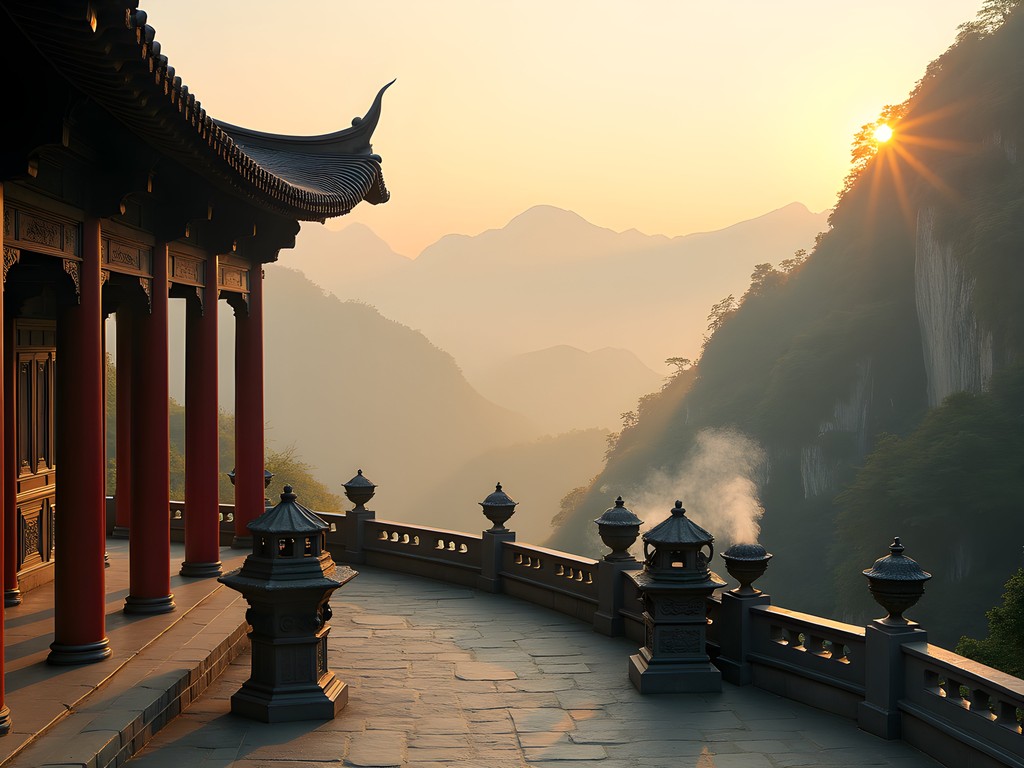
💡 Pro Tips
- Visit during the annual temple fair in April to experience traditional performances and ceremonies
- Bring offerings of fruit or incense if you wish to participate in temple rituals
- Start early to avoid afternoon thunderstorms common in summer months
Trail Running the Huanghuacheng Great Wall
As someone who's completed the Rome Marathon and regularly tracks miles in Florence's Cascine Park, finding good running routes is always a priority when I travel. In Beijing, I discovered the perfect trail run that combines endurance training with historical exploration: the Huanghuacheng section of the Great Wall.
Located about 60 km north of Beijing, Huanghuacheng (Yellow Flower Wall) offers a unique running experience where parts of the ancient wall actually disappear into a reservoir, creating a landscape where water, mountains, and human history intertwine. The name comes from the wild yellow flowers that blanket the mountainside in summer, creating a stunning contrast against the grey stone and blue water.
What makes this section perfect for runners is its varied terrain and relatively low visitor numbers. The route I've developed starts at the main entrance but quickly branches onto less-restored sections where you'll likely have the wall entirely to yourself. The 12 km loop I follow includes restored segments with even footing, wild overgrown sections where you'll need to watch your step, and mountain trails that connect different parts of the wall.
The run includes significant elevation changes as you climb and descend multiple watchtowers, making it an excellent training ground for trail runners. I track my runs with my GPS watch, which helps me compare my performance against previous visits - there's nothing like the motivation of beating your previous time up to watchtower five!
Beyond the physical challenge, running Huanghuacheng offers something truly special: moments of solitary connection with one of humanity's greatest monuments. There's a particular watchtower about 4 km in where I always stop to catch my breath and take in the view. Sitting there alone, legs burning pleasantly from the climb, watching the wall undulate across mountains in both directions – it's a runner's meditation that feeds both body and spirit.
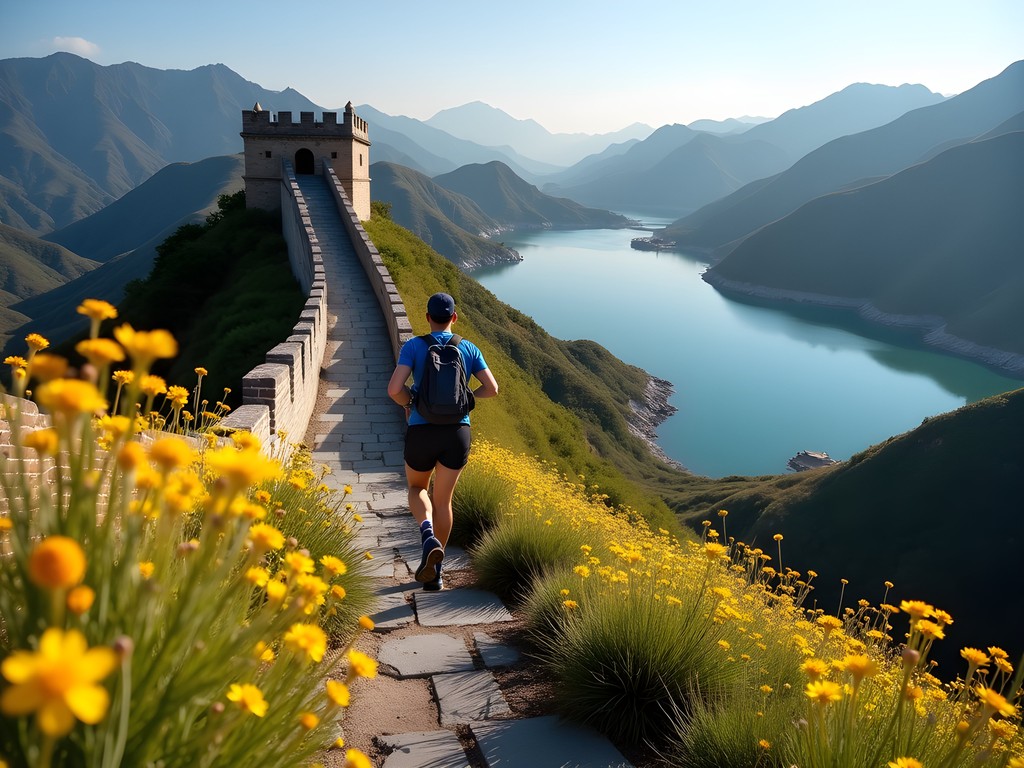
💡 Pro Tips
- Bring trail running shoes with good grip - some sections are steep and slippery
- Carry extra water - the combination of elevation gain and exposure makes this more demanding than the distance suggests
- Take the earliest bus from Dongzhimen to have the wall mostly to yourself
Canyoning Adventure at Shidu Nature Park
When the summer heat in Beijing becomes unbearable, there's no better escape than the refreshing waters of Shidu Nature Park. Located about 100 km southwest of the city, Shidu (literally "Ten Crossings") gets its name from the ten times visitors cross the Juma River as they explore the karst landscape of towering limestone peaks.
While most tourists stick to the scenic boat rides and gentle walking paths, adventure seekers can find excellent canyoning opportunities in the park's hidden gorges. The first time I ventured here with a local adventure group, I was skeptical – could a place so close to Beijing really offer the kind of adrenaline rush I was used to finding in more remote locations? The answer was a resounding yes.
The canyoning route takes you through narrow gorges where limestone walls tower hundreds of meters overhead, creating cool, shaded passages even on the hottest summer days. The adventure involves swimming through emerald pools, scrambling over boulders, rappelling down small waterfalls, and jumping into deep natural pools (always check depth first!).
What makes Shidu special is how the adventure intertwines with the distinctive Chinese landscape that has inspired traditional paintings for centuries. You're essentially moving through a living scroll painting – mist clinging to karst peaks, twisted pine trees growing impossibly from rock faces, and the occasional glimpse of a distant temple perched on a hillside.
For this adventure, having a waterproof bag is essential to keep your valuables dry. I always bring my dry bag which has proven itself reliable through countless water adventures from Italy to China. The 10-liter size is perfect for a day trip, with enough room for a small towel, snacks, and a camera.
The full canyoning route takes about 5-6 hours to complete, though there are shorter options for beginners. While you can explore some parts independently, I recommend joining a guided group for the full canyoning experience, as local knowledge is essential for safety and finding the best routes through the gorges.
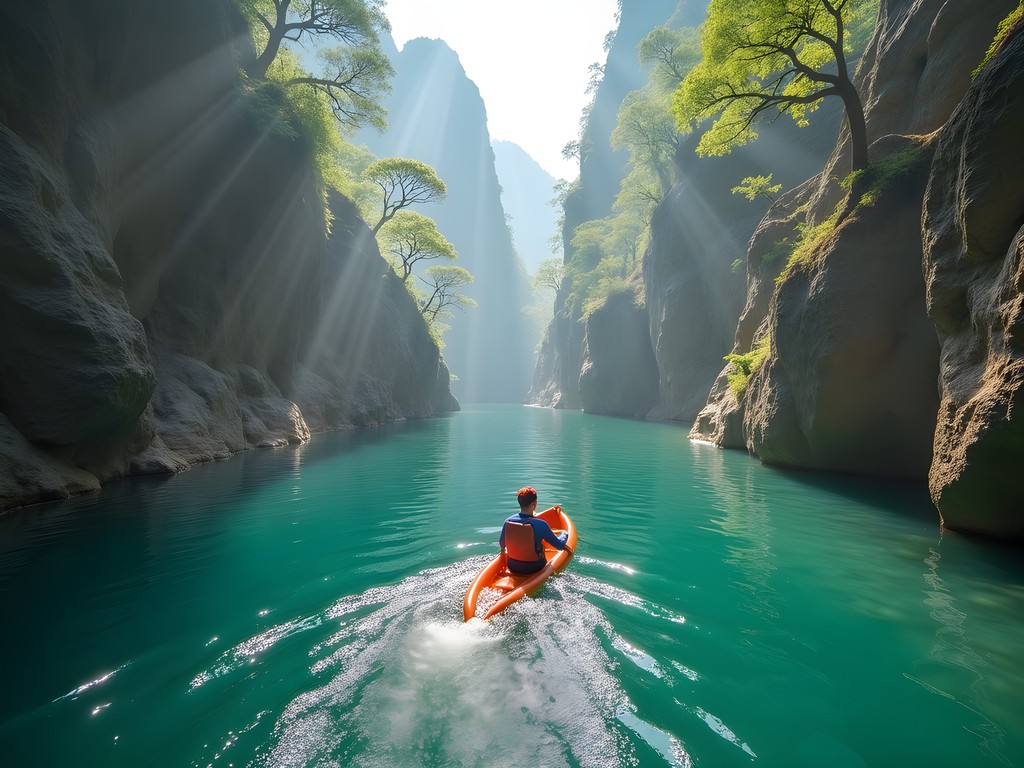
💡 Pro Tips
- Book a canyoning guide through one of Beijing's adventure groups like Beijing Hikers
- Wear quick-dry clothing and water shoes with good grip
- Visit on weekdays if possible - weekends can get crowded with domestic tourists
Final Thoughts
Beijing surprised me. Behind its facade of imperial palaces and modern skyscrapers, I discovered a gateway to adventures that challenge both body and spirit. These five day trips have become my sanctuary when the city's pace becomes overwhelming - places where I can reconnect with nature, history, and that essential feeling of moving through magnificent landscapes under my own power.
What makes these adventures special isn't just the physical challenge or the stunning scenery - it's how they weave together China's cultural heritage with natural wonders. Whether you're scrambling along an unrestored section of the Great Wall or finding your flow on Baihe's limestone, you're participating in a dialogue between human history and wild landscapes that feels both ancient and immediate.
So next time you find yourself in Beijing, look beyond the Forbidden City and hutongs. Pack your daypack, grab your partner, and discover how the mountains around this ancient capital can transform a city break into an adventure you'll remember for a lifetime.
✨ Key Takeaways
- Beijing offers world-class adventure opportunities within day-trip distance
- Combining cultural exploration with physical challenges creates deeper travel experiences
- Visiting these sites on weekdays dramatically improves your experience by avoiding crowds
📋 Practical Information
Best Time to Visit
September-October or April-May for ideal weather conditions
Budget Estimate
$50-100 per day trip including transportation, guides, and meals
Recommended Duration
5-7 days in Beijing to include city sights and 2-3 day adventures
Difficulty Level
Moderate (Can Be Adjusted Based On Fitness Level And Experience)
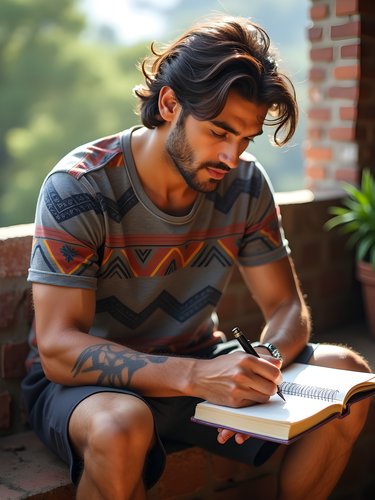
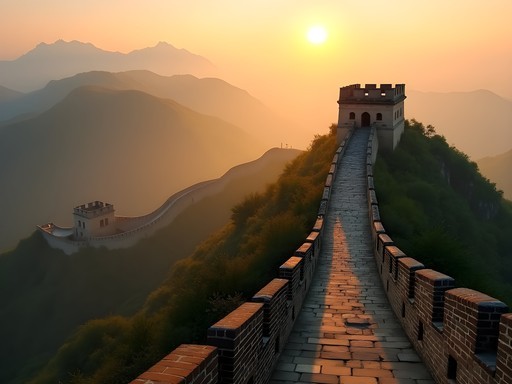

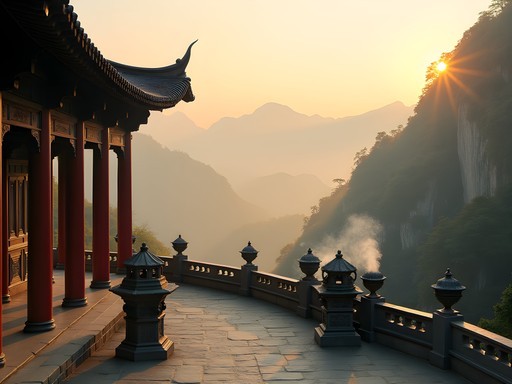
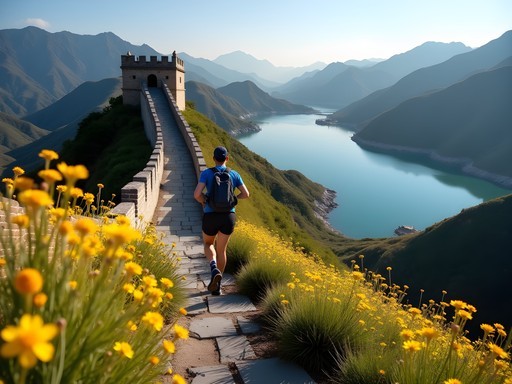
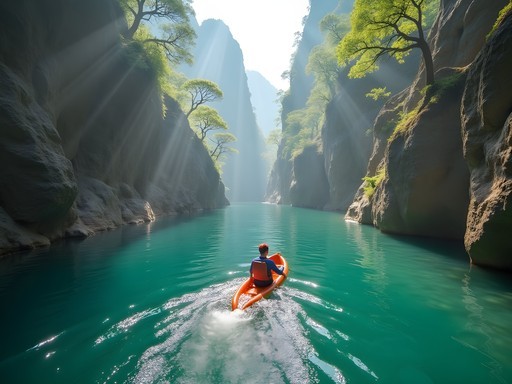










Comments
skyseeker
Just wanted to say thanks for recommending Baihe Canyon! We're not experienced climbers but the easier bouldering routes were perfect for us beginners. The river views were incredible and we barely saw any other tourists. Definitely a hidden gem compared to the crowded sections of the Wall!
Sage Dixon
Great post Timothy! I've done all these day trips from Beijing and would add that public transportation is actually quite doable for most of them. For Baihe Canyon especially, there's a direct bus from Dongzhimen station that takes about 90 minutes and costs next to nothing. I found it much more interesting than dealing with taxis or tour groups. Also worth mentioning for anyone heading to Miaofengshan - try to time your visit during one of the temple festivals if possible. I was there during the spring festival in April and the atmosphere was incredible with hundreds of locals making pilgrimages. The food stalls alone were worth the trip!
triplife
Did anyone try getting to these spots using public transportation? We'll be staying near the Forbidden City and don't want to rent a car or join a big tour group.
skyseeker
We did Mutianyu by public bus (916 express from Dongzhimen, then local minibus) - took about 2 hours each way but super cheap! For Jiankou though, we ended up splitting a private driver with people from our hostel since public transport doesn't go all the way.
triplife
Thanks for the tip! Good to know about the driver for Jiankou.
wavewanderer
Just got back from Beijing and did the Huanghuacheng trail run you mentioned! Absolutely incredible experience and way less crowded than Badaling where all the tour buses go. We actually camped nearby and caught sunrise on the wall - magical moment watching the light hit those ancient stones. The trail was more challenging than I expected though - those stairs are no joke! Definitely recommend bringing trekking poles for anyone planning this route.
escapebackpacker4361
Camping near the wall sounds amazing! Was it officially allowed or did you just find a spot?
wavewanderer
We stayed at a small guesthouse in the village that lets you pitch tents in their yard. Not exactly ON the wall (that's not allowed) but close enough for an early morning hike. The family that runs it was super friendly too!
escapebackpacker4361
Going to Beijing next month! How difficult is that Jiankou section really? I'm not super fit but want to see the 'wild' wall.
Sage Dixon
I did Jiankou last year and it's definitely challenging! Parts are quite steep with loose bricks. If you're worried, consider starting at Mutianyu and just hiking a small portion toward Jiankou instead. You'll still get amazing views without the risky sections. Bring good hiking boots and plenty of water!
escapebackpacker4361
Thanks Sage! That's really helpful. Think I'll try the Mutianyu approach then. Did you hire a guide or is it easy enough to navigate solo?
Sage Dixon
For Mutianyu, you can definitely do it solo. It's well-marked and there are usually other tourists around. If you want to venture toward the wilder sections, I'd recommend my hiking map which shows all the wall sections clearly. Have an amazing trip!
Lillian Diaz
Timothy! Your post couldn't have come at a better time. Just finished the Miaofengshan Mountain Pilgrimage yesterday and it was exactly as you described - that blend of spiritual and physical challenge hit differently than typical hikes. The locals I met along the way were lighting incense and leaving offerings at the small shrines, and one elderly woman insisted I try her homemade rice cakes. For anyone planning this trek, I'd recommend bringing a lightweight daypack since you'll want extra water and layers as the elevation changes. Also worth noting: there's a small entrance fee (about 40 yuan) that wasn't mentioned in the post. The temple at the summit was under partial renovation but still absolutely worth visiting!
tripnomad
Great post! Has anyone done these trips using public transportation only? How feasible is it without speaking Chinese?
oceanperson
We did! The subway in Beijing has English signs and announcements. For buses, have your destination written in Chinese characters to show the driver. Downloading a translation app helped us tons. It's totally doable!
nomadqueen
Bookmarked! Heading to Beijing next month 🇨🇳
Marco Suzuki
Just got back from Beijing and did the Jiankou-Mutianyu hike you recommended. Spot on about the contrast between wild and restored sections! I'd add that hiring a local guide is worth every yuan - our guide Mr. Zhang knew exactly where to enter at Jiankou (tricky to find) and shared fascinating historical context throughout. The 4-hour timeframe is accurate for moderate hikers, but I'd recommend starting by 8am to beat both crowds and afternoon heat. Huanghuacheng was also brilliant but much less visited - perfect for those wanting solitude on the wall.
Timothy Turner
Thanks Marco! Great point about the guide - I should have emphasized that more. Did you make it to Baihe Canyon too?
Marco Suzuki
Unfortunately not - ran out of days! Saving that for next time. The trail running at Huanghuacheng made up for it though!
photoqueen
These photos are STUNNING! That shot of the misty wall at Jiankou is straight out of a dream!!! 😍
Venture X
Premium card with 2X miles, $300 travel credit, Priority Pass